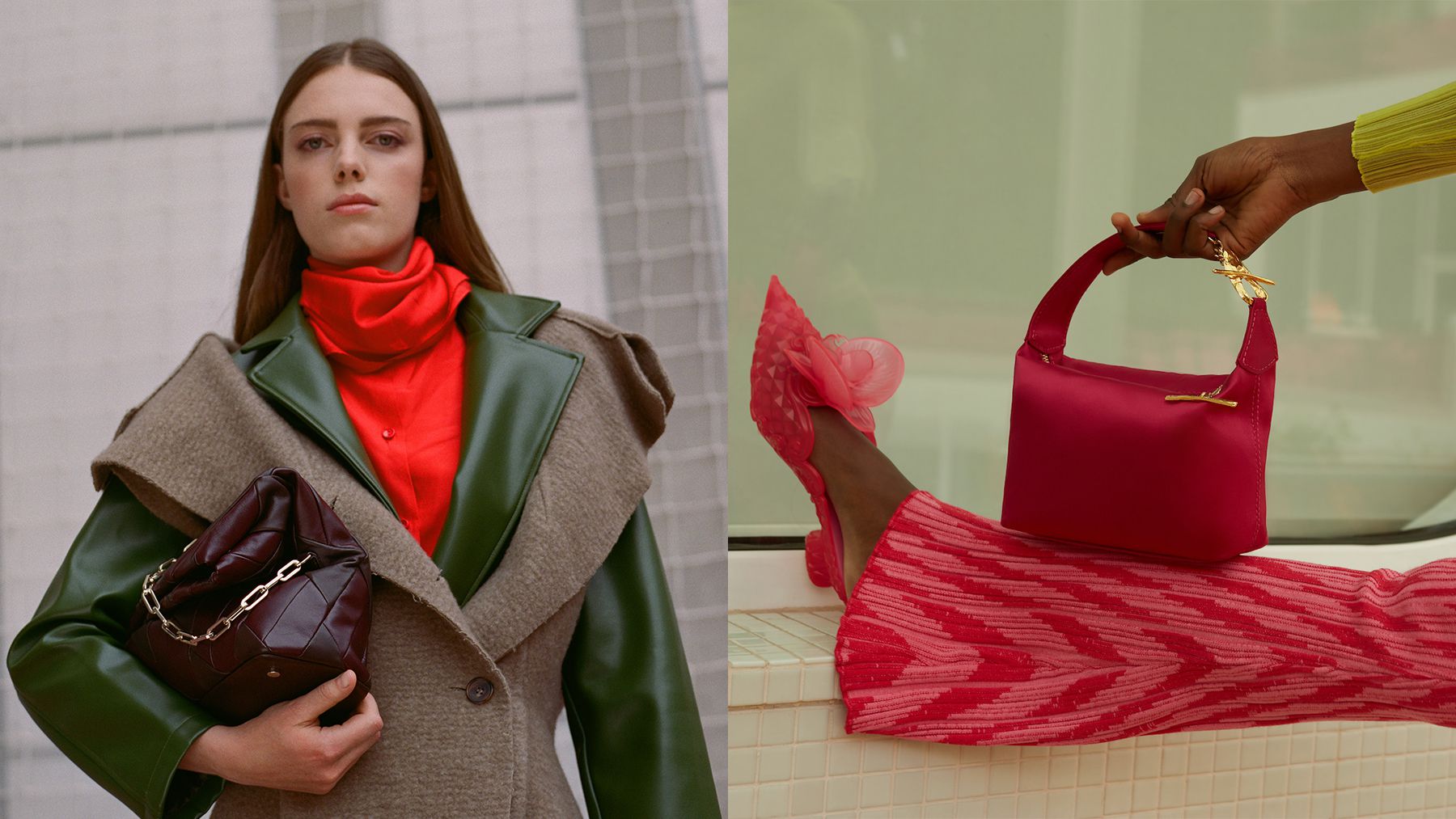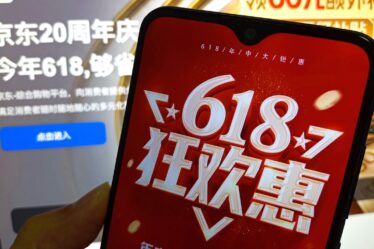
When Bea Recoder heads to Paris trade show Tranoï this week, she must navigate a difficult balancing act.
The designer, whose accessories brand Studio Reco works with surplus leather from high-grade tanneries, needs to grow her wholesale business. But doing so means engaging with a fashion system she is trying to subvert; Recoder’s choice to use excess leather reflects her ambition to address, rather than contribute to, the waste created by the industry.
In some ways, that’s proved a positive, with many retailers eager to stock brands with an eco-friendly narrative; Studio Reco’s colourful patchwork bags, which retail for as much as $700, are already stocked in Browns, Farfetch and Galeries Lafayette, among others. But for a brand with limited-run collections designed around fluctuating supplies of textile waste, it can be hard to guarantee the exact colourways, models and volumes that retailers are looking for.
It’s a challenge facing a growing number of emerging designers who are looking to build ethical and environmentally responsible businesses; wholesale partnerships can provide an unparalleled opportunity to drive exposure and revenue, but the trade-off is that brands often have to give up control over pricing and manage demands for constant newness, rapid production and inflated collection sizes that fly in the face of core values like low-waste, ethical and slow fashion.
“When you’re on this crazy hamster wheel of the global wholesale fashion calendar, it doesn’t leave time and space to really dive into your supply chain, and to better your supply chain,” said Maggie Hewitt, who took her slow-fashion label Maggie Marilyn direct-to-consumer in 2019 in a bid to grow her collection of responsibly sourced basics and engage with customers on her own terms.
The tension can put brands with sustainable and ethical positioning in a difficult situation: bagging a big stockist is a major coup, but fail to establish how this new business partnership meshes with your brand’s core values and you run the risk of both selling out and souring important relationships. BoF breaks down how to avoid that.
Think Small but Mighty
Retailers’ demands for newness, be it through hyped-up drops, seasonal collections, or working up exclusive capsules, can be a test for designers pursuing a low-waste, slow fashion approach to their business.
“We are seeing more and more retailers wanting to stock sustainable brands… [but] 80 percent of the time, it’s more of a tick-box exercise as opposed to a genuine desire for change,” said Ioanna Topouzoglou, founder and creative director of vegan handbag brand Mashu. Buyers “kind of need us to always have bigger collections, more different colourways and just so many more options available for them.”
But as sustainability creeps up the agenda for retailers too, there are more opportunities to find alignment in ways of working. Ida Petersson, buying director at Farfetch-owned luxury retailer Browns, seeks out emerging designers making unique pieces from upcycled items or deadstock fabric as a way to meet consumer appetite for ethically produced garments that are also exclusive and personalised. For instance, she picked up a collection of 40 one-of-a-kind dresses by American womenswear designer and 2021 LVMH Prize finalist Conner Ives while he was still a second-year student at Central Saint Martins.
Finding a wholesale partner that values the exclusivity of small-batch production can be powerful. In June, LA-based designer Sami Miro was tapped by online boutique FWRD to design a couture gown from deadstock leather for Australian model Duckie Thot to wear to the star-studded amfAR gala in Cannes. The high-fashion moment boosted Miro’s exposure and the accompanying limited run of mini-dresses, also crafted from deadstock, fed the buzz for FWRD while still aligning with Miro’s ethos as a low-waste designer who works with vintage clothes, local fabric mills and deadstock fabric.
“Without any promotion, [the FRWD dress] sold out in like three hours,” said Miro.
Balance Growth With Purpose
Any business needs to be realistic about how quickly it can feasibly scale, but that’s especially true for sustainably minded brands that risk losing sight of their ethos and credibility as they chase growth. It can be tempting to shift to bigger, cheaper manufacturers or to cut corners on sourcing costs to meet the demands of an important influx of wholesale orders, but it’s a non-starter when specific materials or suppliers are an integral part of your business model.
“We’ve had retailers say that they would love if our products were more competitive in terms of pricing, but that’s a bit tricky for us because we also want to be able to pay workers above a living wage,” said Topouzoglou. The brand’s choice of materials — experimental plant-based alternatives to leather — also come at a premium. When it comes to balancing wholesale opportunities with values, “it’s [about] knowing when to say no,” she added.
Equally, it’s about finding opportunities to grow at a pace and in a way that supports existing suppliers and relationships. When Sami Miro Vintage started gaining traction with wholesale partners, Miro was only working with a handful of LA-based sewers making upcycled vintage collections. She didn’t want to give up that close connection to her production as orders started to increase, so instead found a way to work with one entrepreneurial member of her sewing team so they could expand their businesses together.
“I’ll never forget the day when [he] came into the office, … [showed] me his business card [and said] ‘I have a business now — a real business — and I have a team,’” said Miro. The supplier has upsized his facilities three times since 2020 as a result of the partnership, she added.
Find Ways to Own the Narrative
For many emerging brands, the appeal of a wholesale partnership is the exposure and credibility shelf-space in a major retailer can bring. But it also means relinquishing control over how products are positioned.
That’s a challenge for sustainability-focused labels, who often see the narrative around how their products are made as equally important as their aesthetic, both to engage customers and potentially justify a higher price point commanded by more responsible sourcing and manufacturing choices.
“You can have the best brands in the world, but if you don’t support them [or] champion and platform their amazing work … no one [will] actually buy the product,” said Browns’ Petersson.
Finding supportive partners and working with them to make sure they are able to explain technical or complex sustainability efforts should be an important focus of negotiation with potential retailers.
Recoder, for example, is looking into training sessions with department store sales staff to ensure they are familiar with the basics of the brand’s story, where its products are made (two factories in Spain and India) and how it uses deadstock leather as a low-waste solution
Brands may also consider shop-in-shop or concession models that offer greater control over merchandising, marketing and even hiring and training staff. It‘s one of the few circumstances in which Hewitt would entertain returning Maggie Marilyn to multi-brand retail, “so that we could really isolate the brand and what we stand for,” she said. “It just felt confusing to me, for us to sit on a floor with other brands that didn’t have the same values,” she added.
If negotiations with potential partners ultimately fall flat, it’s important to have confidence in your brand’s appeal beyond one interested buyer and trust that the right kind of partnership will come along.
“If you have an opportunity to work with a larger wholesale account, it’s easy to [want to] do anything you can to work with them,” said Miro. “But at the end of the day, you have to stay true to yourself, because you don’t want to give them a product that doesn’t represent your brand.”


